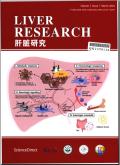Single-cell transcriptomic insights into endosulfan-induced liver injury: Key pathways and inflammatory responses
IF 2.1
Q2 Medicine
引用次数: 0
Abstract
Background and aims
Environmental pollutants, particularly organochlorine insecticides like endosulfan (ENDO), are increasingly linked to liver toxicity and related diseases. Despite its widespread historical use, the mechanisms underlying ENDO-induced liver damage remain poorly understood. This study aims to elucidate the cellular and molecular mechanisms of ENDO-induced hepatotoxicity.
Methods
C57BL/6 mice were exposed to ENDO for two weeks. Single-cell RNA sequencing (scRNA-seq) was subsequently performed on mouse livers to explore ENDO-induced hepatotoxicity at the single-cell level. Differentially expressed genes (DEGs) across cell types and treatments were identified and then subjected to pathway enrichment to uncover key biological processes affected by ENDO. Transcription factor (TF) regulatory network, pseudotime trajectory, and cellular communication analysis were used to explore the molecular and cellular changes after ENDO exposure.
Results
ENDO not only caused direct hepatocyte injury but also activated hepatic stellate cells and lymphocytes, triggering inflammatory responses with upregulation of multiple key chemokines and cytotoxic genes. Additionally, ENDO exposure led to the recruitment and activation of myeloid cells, contributing to the inflammatory milieu. An increase in intercellular communication and changes to the hepatic microenvironment, especially the interaction between activated hepatic stellate cells and CD8+ T cells were observed, further implicating these processes in ENDO-induced liver damage.
Conclusions
This study provides new insights into the cellular and molecular mechanisms underlying liver injury induced by organochlorine insecticides like ENDO. Key genes and pathways involved in ENDO-associated liver toxicity have been identified at a single-cell resolution. These findings suggest that altered cellular communications and inflammatory responses may play pivotal roles in the pathogenesis of ENDO-induced liver injury.

单细胞转录组学洞察内啡肽诱导的肝损伤:关键途径和炎症反应
背景和目的环境污染物,特别是硫丹(ENDO)等有机氯杀虫剂,与肝脏毒性和相关疾病的联系越来越紧密。尽管其历史上广泛使用,但内源性内毒素引起的肝损伤的机制仍然知之甚少。本研究旨在阐明内啡肽诱导肝毒性的细胞和分子机制。方法sc57bl /6小鼠暴露于ENDO 2周。随后对小鼠肝脏进行单细胞RNA测序(scRNA-seq),在单细胞水平上探索内啡肽诱导的肝毒性。鉴定不同细胞类型和处理方式的差异表达基因(DEGs),然后进行途径富集,以揭示受ENDO影响的关键生物过程。利用转录因子(TF)调控网络、伪时间轨迹和细胞通讯分析来探讨ENDO暴露后的分子和细胞变化。结果sendo不仅能直接损伤肝细胞,还能激活肝星状细胞和淋巴细胞,通过上调多种关键趋化因子和细胞毒基因引发炎症反应。此外,ENDO暴露导致骨髓细胞的募集和激活,有助于炎症环境。观察到细胞间通讯的增加和肝脏微环境的改变,特别是活化的肝星状细胞与CD8+ T细胞之间的相互作用,进一步暗示这些过程与内啡肽诱导的肝损伤有关。结论本研究为有机氯杀虫剂ENDO等致肝损伤的细胞和分子机制提供了新的认识。参与endo相关肝毒性的关键基因和途径已经在单细胞分辨率下被确定。这些发现表明,细胞通讯和炎症反应的改变可能在内啡肽诱导的肝损伤的发病机制中起关键作用。
本文章由计算机程序翻译,如有差异,请以英文原文为准。
求助全文
约1分钟内获得全文
求助全文

 求助内容:
求助内容: 应助结果提醒方式:
应助结果提醒方式:


